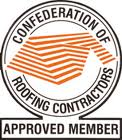How To Deal With Emergency Roofing
Emergency roof repairs are essential if your property has suffered badly from storm damage. When extensive damage has been done to your roof, sometimes you’ll need an emergency roofer to prevent further damage from occurring to your property.
Damage that will mostly likely require emergency roof repairs is often when hurricane level winds have caused your chimney to leak or when there’s a risk of slates or chimney brickwork falling and injuring you or passersby. You may also need an emergency roofer if vast amounts of water are leaking in from your rooftop.
Acting quickly in these circumstances can save you the trouble and expense of having a whole new roof replacement in the future if you don’t sort out the problem quickly – any delay could end up making things worse.
Before your emergency roofer comes out, try to limit the damage yourself. You may be able to perform some temporary repairs, and if the inside of your home has flooded stop water damage from ruining your belongings by mopping up the water as best you can. Cover your precious possessions with plastic sheeting to prevent any further water damage.
Put down buckets to collect water that’s still leaking from the roof and ensure that the electrics are safe. If you have any worries about water touching the electrics, turn off the power if it’s safe to do so, and call a qualified electrician immediately.
Protecting the inside of your property may be a race against time. If your ceiling is threatening to burst under the weight of any flooding, controlling the water will give you the best outcome. Puncture a small hole in the ceiling where water has caused a blister to form. Do this with a broom handle or something similar so that you can allow the water to flow through steadily, keeping damage to a minimum.
If your chimney has been damaged and threatens to collapse, make sure that you avoid walking underneath that area until an emergency roofer has made it safe again.
If it’s your roof that’s presenting a problem, don’t be tempted to go up there and fix it until the storm has passed. You should never attempt to climb onto your roof when it’s wet or you’ll risk slipping and doing yourself an injury. If you’re good at DIY and you know what you’re doing when working at height, then you may be able to carry out some temporary repairs yourself. Remember, use the appropriate tools such as a suitable extension ladder, rubber soled shoes to help you grip, and a tool belt so that your hands are free to steady yourself.
The first step is to clear any standing water. Then you can set to work fixing loose slates or reattaching missing shingles. You can do this using roof cement. Coat the underside of the shingles and press back in to place firmly. If the shingles have started to curl, you can bend them back into shape easily in warm weather. In the winter, you’ll have to apply a little heat – only a little, mind, or you’ll damage them even more. Use a propane torch to heat the shingles gently until they’re soft enough to remould. Then apply roof cement and reattach to your roof.
Loose flashings can be fixed by into place with roof cement too. Simply coat the underside and stick back to the roof to provide a temporary solution.
For professional emergency roof repairs, contact G&A Roofing and Building. Our emergency roofing service comes highly recommended. Our team of experienced emergency roofers will provide a swift response when you need urgent repairs and maintenance for your property. Contact us for help on 0800 626430.



